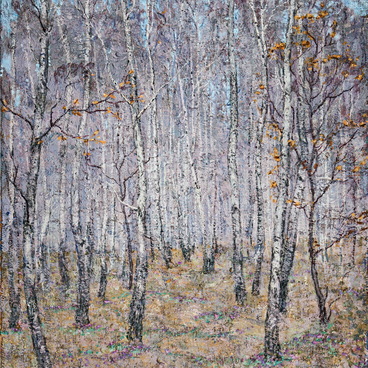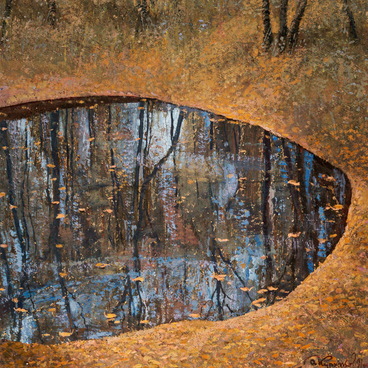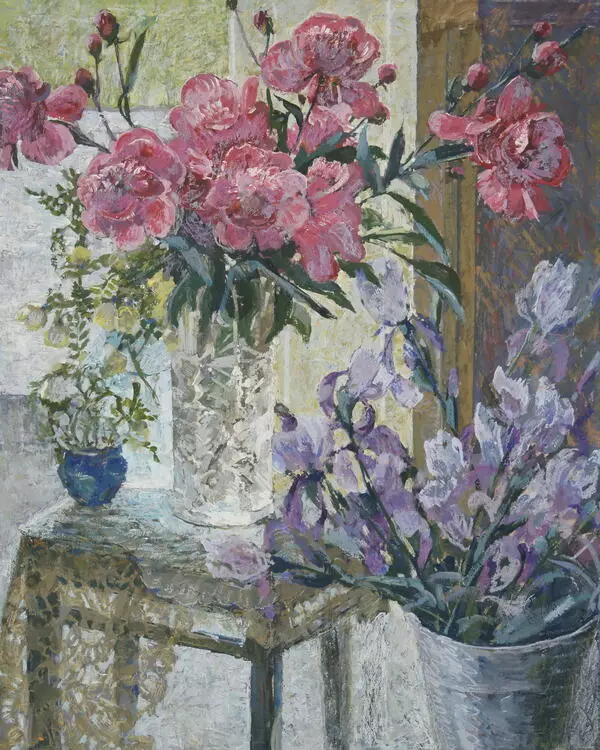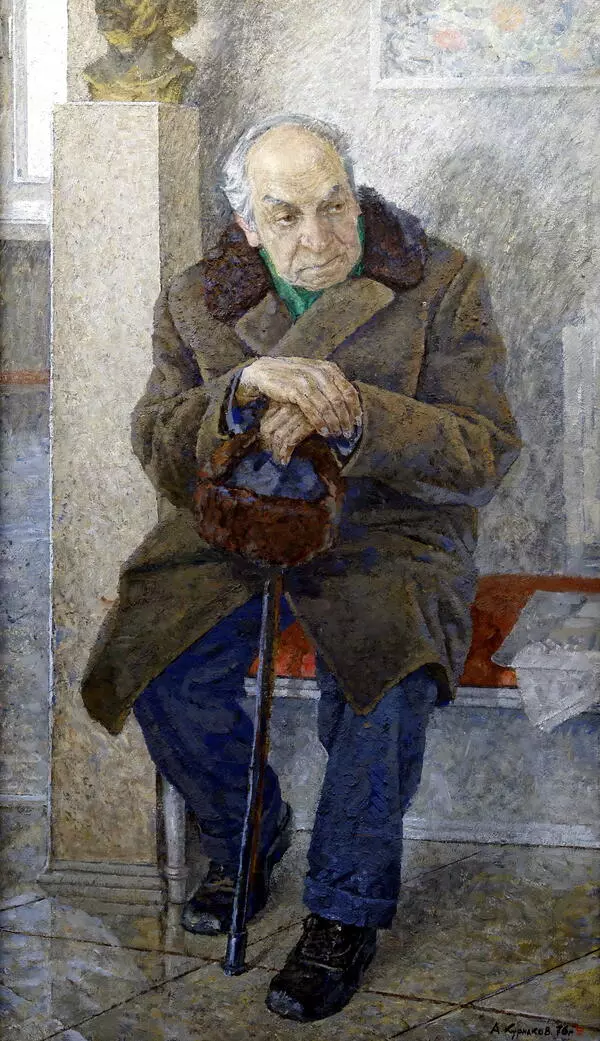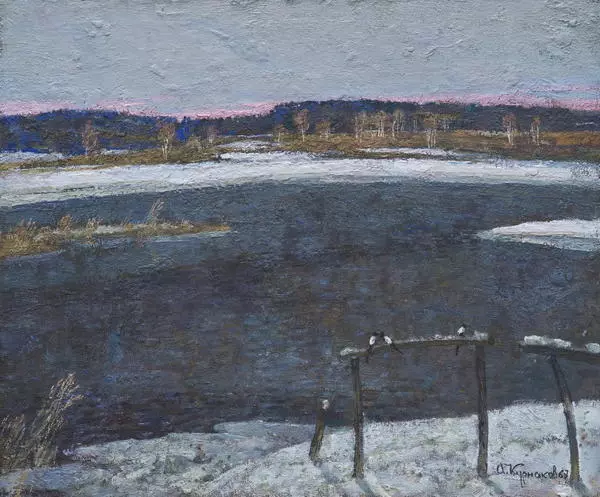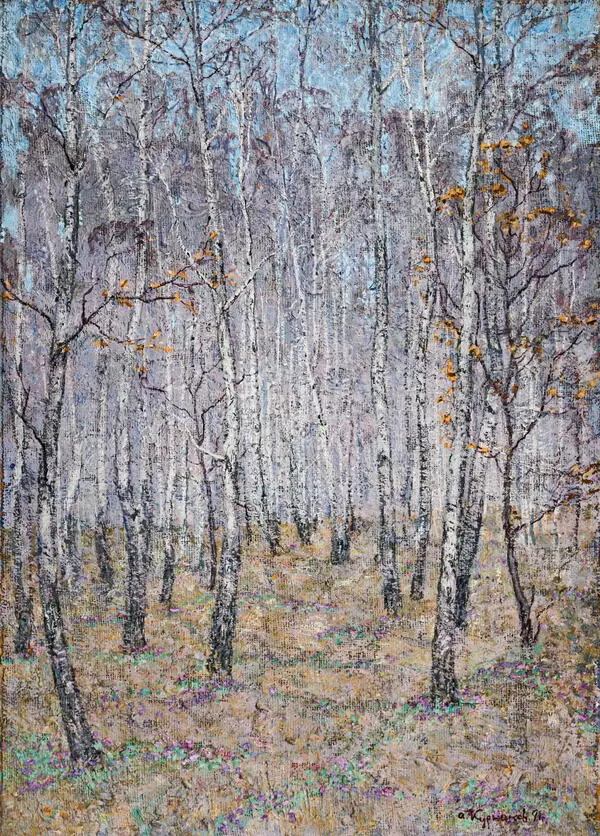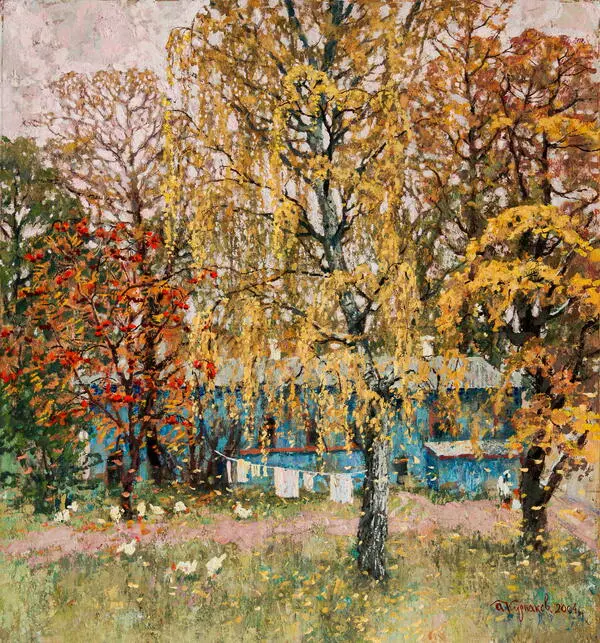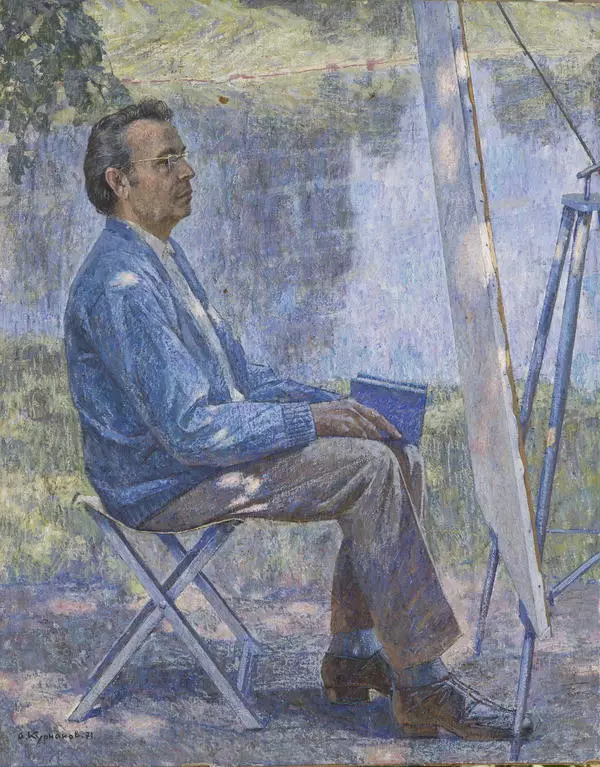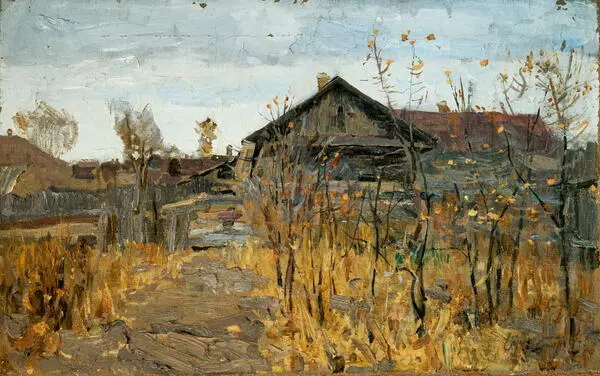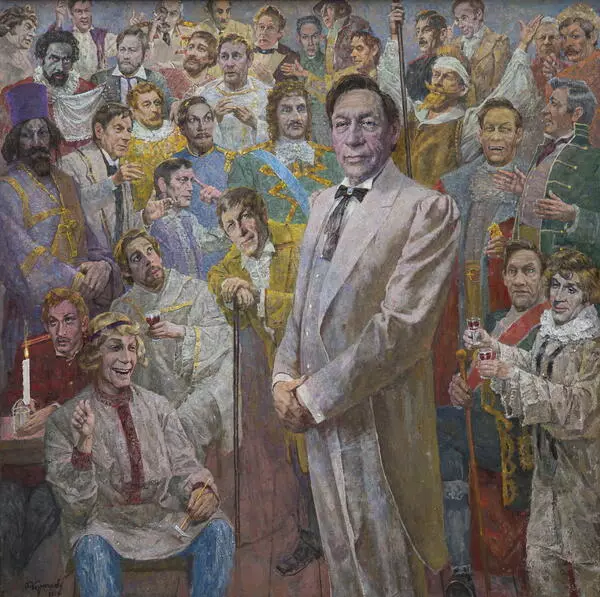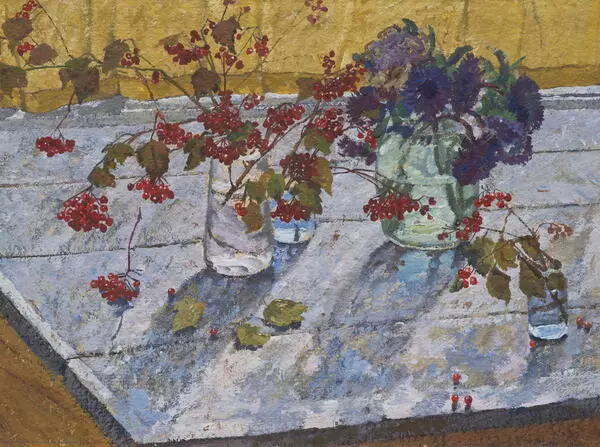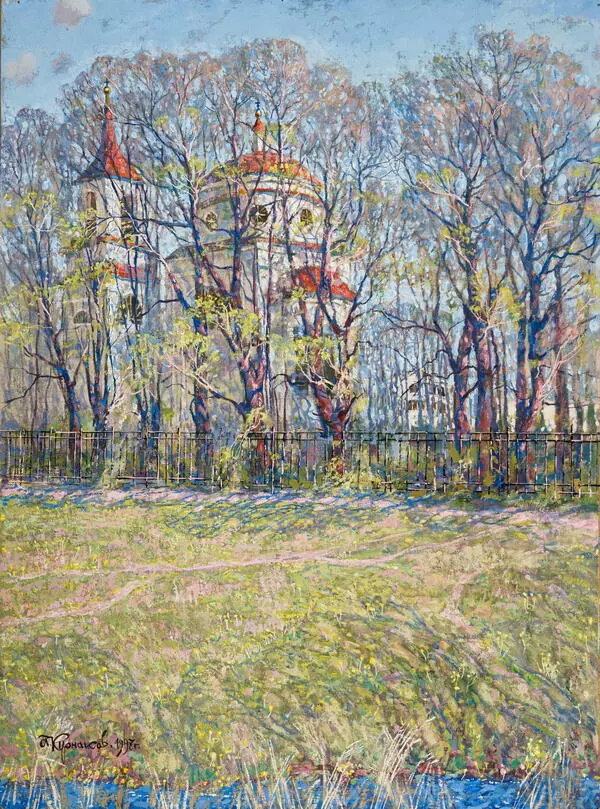Impressed by the beauty of his homeland, Kurnakov depicts the mysterious twilight with its shimmering silvery moonlight and fresh coolness. The picture can be viewed two ways by either following the beams of the young moon from the top downward or slowly raising your gaze from the bottom upward to the dark immense solemn sky. There is not just one key element in this painting — everything is of equal importance and interest.
The foreground depicts a wide green glade illuminated by the moonlight. Its surface is streaked with an intricate pattern of shadows cast by the trunks and branches of young birches. The colors of the shadows vary between dark green, purple and black depending on the lighting. The glade is strewn with eye-catching spring flowers. Their mysterious mauve color is created by the silver moonlight. At first glance, the greenery of the young birches seems to be painted with just one wide solid stroke. And yet upon a closer look, even the smallest details are discernible — not only the trunk of each tree but also its branches and even the leaves fluttering in a light wind.
High above all this is the immense sky, which can be seen between the tree crowns, making them seem a little blue and airy.
The title of the painting refers to the season of nightingale songs. The nature’s calendar indicates this period in May and June. While the nightingale’s singing is most passionate right before dawn, its warble can often be heard in the middle of the night. The alternating whistling and chirping of this little bird create an entire musical performance. Each trill of the nightingale song is repeated several times, creating a wonderful melody — as if the song of nature itself.

